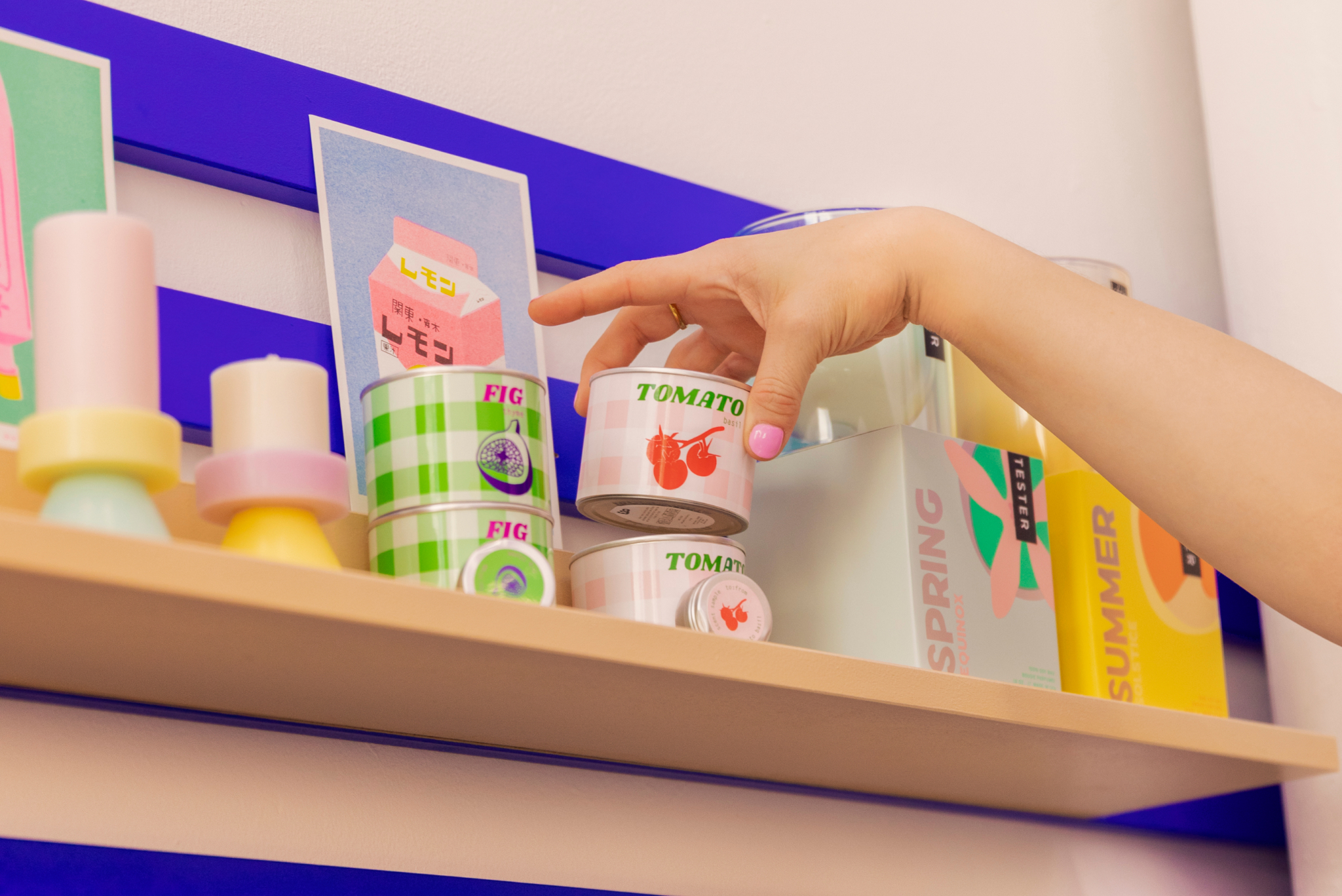

Retail businesses come in many shapes and styles, from specialty grocers and Main Street gift shops to clothing boutiques and shoe stores. But they all share a common goal—to serve great products to their shoppers. When it comes to sourcing those items, retailers with an e-commerce presence typically go one of two routes: They buy wholesale or utilize dropshipping suppliers.
Before picking a direction, you’ll need to understand what each method entails, the nuances between them, and what matters most to you and your business.
What is wholesale?
Wholesale is the tried-and-true method of sourcing products for a retail business and is likely as old as retail itself. A wholesaler produces items in bulk, usually from its warehouse or studio, and then sells them to retail brands that then sell them to shoppers.
Wholesalers can sell their items at a price below their actual retail value due to the high volume at which they sell the items. Retailers can make connections with wholesalers at trade shows or wholesale marketplaces like Faire, which connects high-quality independent brands with independent retailers.
Unlike retailers who do dropshipping, retailers who buy wholesale are responsible for handling and storing their goods (like in the back room of a store), so they’re a lot closer to the products and their clients. And while dropshipping happens only online, retailers can purchase wholesale goods to sell online or in a brick-and-mortar shop. Wholesalers are an essential part of the supply chain, and many retailers rely on them to stock their stores.
What is dropshipping?
Dropshipping is an online-only business model where a seller is a middle person between suppliers and shoppers. A seller lists products for sale on their website, and when they receive an order, the order goes straight to the third-party supplier, who then packages and fulfills the order. T-shirt dropshipping is one of the most popular ways sellers use this system.
The seller never has to keep inventory on hand or store products. They never even see the products they’re selling. It’s a very hands-off way of running an e-commerce business.
Should I dropship or wholesale?
When it comes to dropshipping or wholesale buying, there isn’t a right or wrong answer. There are successful retailers who use either or both to grow their business. It ultimately comes down to your needs and your values.
Benefits of buying wholesale
Quality of products: Buying from an independent or artisan wholesale business can often mean a higher standard of quality. A small, mission-forward business may mean greater attention to detail, pride in its offerings, and commitment to standing behind its products.
Better branding: When you buy items wholesale to sell in your store, you have much more control over the customer experience. That means you can provide thoughtful touches with packaging and branding to give your shoppers a better shopping experience. You can use branded wrapping paper, colorful boxes, or include a small thank-you note to the shopper for supporting your business. All these actions build a better relationship with customers and encourage loyalty.
Higher profit margins: When you buy wholesale, you get a discount from the supplier since you’re purchasing a large volume of goods. This gives you more room to make a profit when you sell to shoppers. Dropshippers don’t get volume discounts since they only purchase a product when a customer completes an order.
Faster fulfillment: As we mentioned above, many dropshippers work with suppliers in China, meaning speedy delivery can be a challenge. When you buy wholesale you have the option of choosing a local or regional wholesaler. Wholesale marketplaces like Faire even allow you to filter by location or only choose wholesalers in the United States. Not to mention that when your suppliers are closer, you can build better relationships with them and negotiate for better discounts.
More exclusivity: Since dropshippers don’t have any exclusivity with their suppliers, they’re always competing against sellers with identical products. Because those who buy wholesale typically have stronger relationships with suppliers, they can have the opportunity to work out exclusivity deals. They may agree to be the only seller of a particular product or at least the only seller within a geographic area.
Key considerations for buying wholesale
Ensure you have proper space and time to manage inventory: Owning your own inventory means more responsibility. You’ll need to store and manage inventory and forecast how much you’ll need at any given time. Planning your inventory-buying strategy can feel daunting, but this article can help get you started.
Operational costs: Buying wholesale means that you’ll usually need to spend more money up front. You’ll have to account for paying for large bulk orders, personnel, storage space, and POS software. You’ll need to make a solid financial plan before you go into business and keep an eagle eye on your budget. However, with Faire, eligible retailers can buy new inventory and pay for it 60 days later. This way, you can start selling merchandise right away.
Keep close tabs on consumer demand: If a customer never places an order, a dropshipper doesn’t have to worry about paying for any products. But for those who buy wholesale, a lack of consumer demand means a back room full of products that you can’t sell. Overstocking can upend a retail business’s budget since they’ll need to sell products at a deep sale and lose profit.
Benefits of dropshipping
No inventory stress: Running up and down warehouse aisles keeping track of pallets doesn’t appeal to you? Gain a comprehensive understanding by explaining palletizing processes, which details how it can optimize your inventory management, showcasing various methods and practical examples. You don’t have to worry about that with dropshipping. The supplier stores the products and handles all inventory management. You just facilitate the sale via your website and take a small cut for your role as the online go-between.
Fewer start-up costs: Since you don’t have to worry about stocking up your warehouse or securing storage space, it costs less to get a dropshipping business off the ground. All you need to get started is an internet connection and e-commerce software tools. Many are attracted to dropshipping because of the minimal up-front investment.
Less financial risk: When using the dropshipping model, you only pay for what customers order, so you never have to place a bulk order. You don’t have to face the challenge of overstocking or buying more inventory than you can sell since as a dropshipper you own no inventory.
Easier scaling: For dropshippers, operational costs and efforts are low for the reasons we described above. That means you may not deal with the difficulties other business models face when they grow very rapidly. You don’t need to procure more warehouse space or hire more cashiers. Your supplier is the one who deals with the increased demand, and you have the option of working with multiple suppliers if needed.
Cons of dropshipping
Less control: Dropshippers never see the products they sell and therefore can’t guarantee quality. If you’re dropshipping reusable water bottles and the bottles are poorly made and leak easily, you won’t know about it until you have customer complaints and negative reviews. This can make it hard to grow your brand. That means that carefully researching and vetting your supplies is vital for dropshippers.
Unpredictable fulfillment: Dropshippers don’t pack and ship orders, so they can’t influence the delivery and unboxing experience. Many of the suppliers dropshippers work with are in China, and delivery times can take longer. If a customer is hoping a last-minute purchase will get there before a birthday or holiday, they could be disappointed. Dropshippers also cannot create a cohesive, premium brand experience because they do not control the packaging for the items they sell.
More competition: A single supplier might be working with many dropshippers. If you dropship dog toys, those same dog toys are being dropshipped to other online stores. So a shopper may purchase an identical dog toy from a seller with better marketing than your business. That’s why paid online ads and marketing funnels are essential for dropshippers. With so much competition, it’s hard to stand out and get your store discovered.
Narrow profit margin: Dropshippers need to price individual items on their site low enough to be competitive with other dropshippers but high enough to still draw a profit. Dropshippers are most successful when they can scale up and sell many products so those cents on the dollar can add up quickly.
While each sourcing method has its points, only you can decide what’s best for your business. With the right information and some thoughtful planning, you’ll be on your way to a thriving retail shop.
Ready to begin buying wholesale for a new retail store? Read more about Open with Faire and learn how to apply for up to $20,000, with 60-day payment terms, to stock your new shop.




